Beijing, the capital of China, is a vibrant and historically rich city known for its unique culture, geography, and customs, making it a city worthy of admiration. With its deep-rooted history and cultural traditions, Beijing stands as one of China’s cultural epicenters. The city boasts numerous historical sites and architectural wonders, such as the Great Wall, the Forbidden City, the Summer Palace, and the Temple of Heaven, among others. These historical landmarks bear witness to China’s rich history and culture, offering visitors a chance to immerse themselves in traditional Chinese culture. If you’re planning a trip to Beijing but are unsure of where to go, read this blog carefully as we introduce the top 25 must-visit attractions in Beijing.
The Great Wall/长城 (¥40)
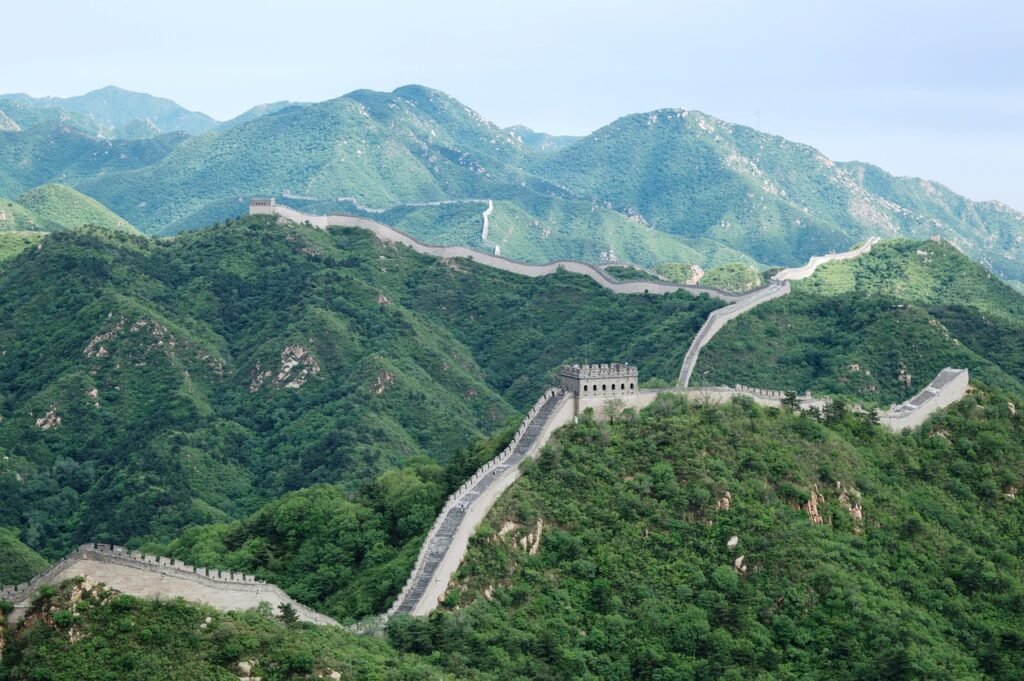
The Great Wall, a symbol of the Chinese people and a UNESCO World Heritage site, embodies the wisdom and diligence of the Chinese nation. This remarkable engineering feat stretches across mountains and rivers, extending like an awe-inspiring dragon from east to west.
The Badaling Great Wall, located in Yanqing District, Beijing, approximately 60 kilometers from the city center, is the most well-preserved and iconic section of the Great Wall. However, the undulating mountain paths and steep stone steps require a certain level of physical fitness to fully enjoy the Great Wall experience.
The Mutianyu Great Wall was built on the ruins of the Northern Qi Dynasty Great Wall and is known for its unique watchtowers and dense enemy towers. There’s a saying about Mutianyu, “The perilous part of the Great Wall is at Mutianyu, and the perilous part of Mutianyu is at Jiankou.” Mutianyu features famous attractions like Zhengguantai, the Big Corner Tower, and Jiankou.
Both of these sections can be chosen based on individual preferences, and detailed guides can be found online. Visiting the Great Wall is one of the best things to do when traveling to Beijing, allowing you to experience the wisdom of ancient Chinese people and feel the grandeur of the Great Wall under your feet.
The Palace Museum/故宫 (¥40/¥60)

A place to visit at least once in a lifetime, the essence of China’s 5,000-year-old culture. The Palace Museum served as the imperial palace during the Ming and Qing dynasties (1368-1911). According to ancient Chinese astrology, it was believed that the Purple Star (the North Star) resided in the center of the heavens, serving as the abode of the Heavenly Emperor, which corresponded to the earthly emperor. This is why the Palace Museum is also known as the Forbidden City.
As one of Beijing’s grandest ancient architectural wonders, the Forbidden City is an unmissable places to visit in Beijing. This palace complex covers a vast area with a total of 980 buildings, making it a place rich in historical and cultural significance. Stepping through the gates of the Forbidden City feels like entering a secret world of emperors, a journey through a tunnel of time. The architectural style characterized by “red walls, yellow tiles, and magnificent gold” will immerse you in the opulence and majesty of imperial palaces.
Summer Palace/颐和园 (¥30)
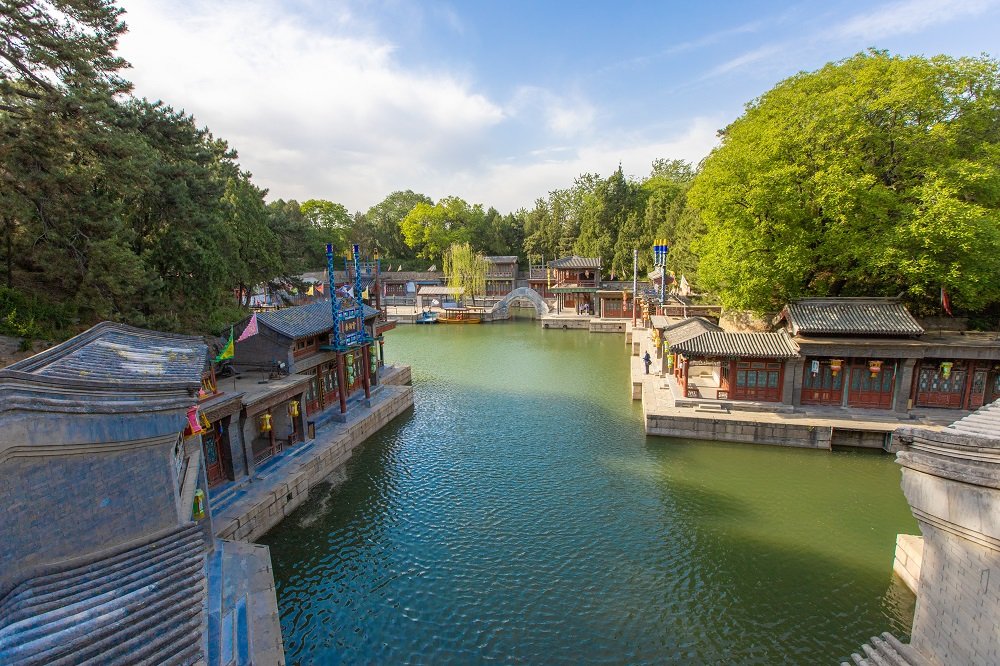
The Summer Palace, a 5A-rated tourist attraction in Beijing, was a royal garden during the Qing Dynasty, originally known as the Qingyi Garden. In the 15th year of Emperor Qianlong’s reign (1750), it was constructed by Emperor Qianlong as a gesture of filial piety to his mother, Empress Dowager Chongqing. The Summer Palace, along with Chengde Mountain Resort, the Humble Administrator’s Garden, and Lingering Garden, is one of China’s four famous classical gardens.
The Summer Palace is a vast landscape garden built around Kunming Lake and Longevity Hill, inspired by the design techniques of Jiangnan classical gardens and modeled after West Lake in Hangzhou. It is the most complete imperial palace and garden complex, often referred to as the “Royal Garden Museum.”
The entire garden is divided into three zones: a political activity area centered around the Renshou Hall, an imperial living area dominated by Yulan Hall and Leshou Hall, and a scenic tourism area consisting of Longevity Hill and Kunming Lake.
Old Summer Palace/圆明园 (¥10)

Yuanmingyuan, also known as the Old Summer Palace, was a renowned royal garden during the Qing Dynasty. It consisted of three main areas: Yuanmingyuan, Changchunyuan, and Qichunyuan. The original architecture was incredibly splendid, earning it the nickname “the Garden of Perfection and Brightness.” However, in 1860, during the Second Opium War, the main buildings were burned to ashes by the Anglo-French forces. Today, visitors can only pay their respects amidst the ruins, searching for traces of the once glorious empire.
Yuanmingyuan’s landscape design predominantly featured water themes, with a focus on water scenes. It boasted vast and tranquil lakes as well as narrow and fast-flowing streams. Qichunyuan, also known as the “Garden of Ten Thousand Springs,” was a collection of numerous small scenic spots within the garden, showcasing a variety of water features. Changchunyuan primarily revolved around large-scale water scenes, with grand architectural complexes. It was a residence often frequented by Emperor Qianlong after his abdication.
When visiting Yuanmingyuan, it is strongly recommended to learn about its history and view images from before its destruction. This will allow you to appreciate the beauty of the site and the weight of its historical significance as you explore the remnants of this once magnificent palace.
The Temple of Heaven/天坛 (¥10/¥15)
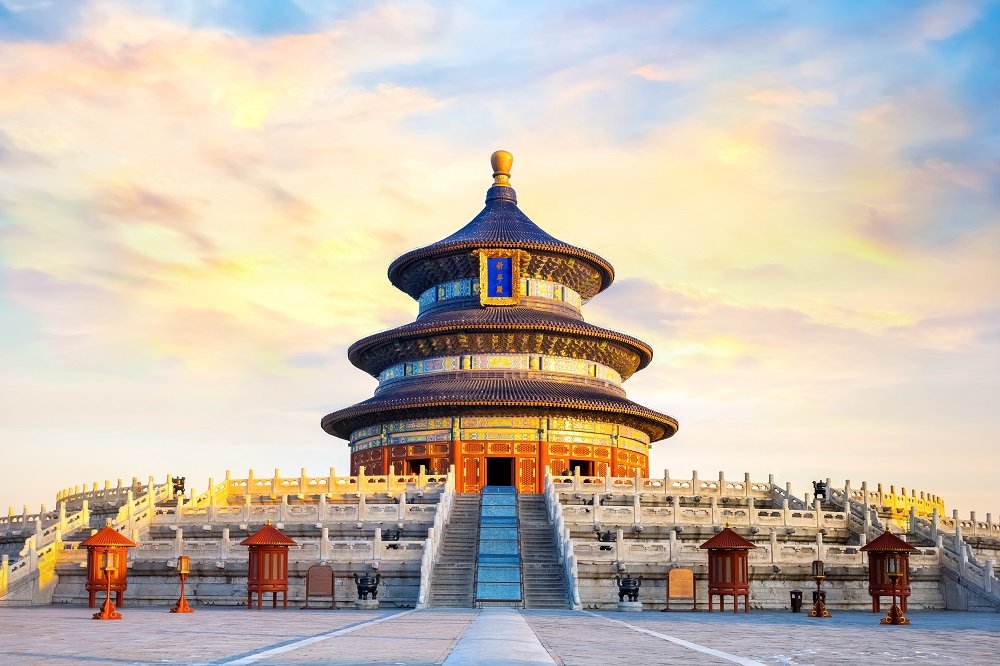
The Temple of Heaven, located in Dongcheng District, Beijing, covers an area of approximately 273 hectares. It consists of three main architectural groups: the Hall of Prayer for Good Harvests, the Imperial Vault of Heaven, and the Circular Mound Altar. The layout is circular, symbolizing the harmony of heaven and earth.
The Temple of Heaven was the place where emperors of the Ming and Qing Dynasties conducted ceremonies to pray for good harvests, rain, and prosperity. It holds significant importance as a symbol of ancient Chinese religious culture and is listed as a UNESCO World Heritage Site.
The Temple of Heaven is a site rich in cultural heritage and historical significance. Whether you are a cultural enthusiast or a tourist, it is a place worth visiting. When touring the Temple of Heaven, you will have the opportunity to appreciate the treasures of ancient Chinese imperial sacrificial culture and experience the solemnity and grandeur it brings.
Remember to bring your camera to capture the unique beauty of this place and show respect for the Temple of Heaven by not causing any damage, ensuring that future visitors can also enjoy this timeless destination.
Tian'anmen Square/天安门广场 (Free)

Tiananmen Square is one of the largest squares in the world, located on the south side of Chang’an Avenue, the traditional central axis of Beijing. In the center of the square stands the Monument to the People’s Heroes, with the Great Hall of the People to the west and the National Museum of China to the east. On the opposite side of the square is Tiananmen Gate.
Tiananmen Square holds great symbolic significance and is a totemic representation. Since the founding of the People’s Republic of China, it has consistently portrayed China’s global image and is considered a sacred place in the hearts of many Chinese people.
Every morning and evening, Tiananmen Square hosts flag-raising and lowering ceremonies. For many Chinese, witnessing one of these ceremonies is a cool thing to do in Beijing. Morning ceremonies tend to draw larger crowds, so if you wish to experience China’s flag-raising ceremony, it’s advisable to arrive early or visit during less crowded times.
Tiananmen Square is open to the public for free. However, if you wish to climb Tiananmen Gate, there is an entrance fee of 15 yuan for adults. Visitors must go through security checks and are allowed to bring cameras but not bags onto the gate. Bags can be stored at the luggage storage facility located near the ticket office.
National Museum of China/中国国家博物馆 (Free)

The National Museum of China is a famous place in beijing, which boasts an architectural area of nearly 200,000 square meters, making it the largest single-building museum in the world. The museum’s collection exceeds 1.4 million items, including a diverse range of ancient relics, modern and contemporary artifacts, rare editions of ancient books, artworks, and more.
Among these, there are 815,000 ancient artifacts, including national treasures like pottery basins with human face and fish motifs, large tripod cauldrons, and the Houmuwu ding, to name a few. Additionally, there are collections of modern artifacts and rare editions of ancient books.
The museum’s exhibitions are categorized into three main series: the Permanent Exhibition, Special Exhibitions, and Temporary Exhibitions. The Permanent Exhibition includes “Ancient China” and “The Road to Rejuvenation,” providing visitors with a splendid journey through Chinese history. Special Exhibitions, based on the museum’s collection, explore various themes such as ancient Chinese bronzes, Buddhist sculptures, jade artifacts, ceramics, and more, offering a rich and colorful cultural and artistic experience. Temporary Exhibitions feature regular displays of historical and cultural artifacts, archaeological discoveries, fine artworks, and other exhibitions, catering to the interests of visitors seeking fresh experiences.
Yonghe (Lama) Temple/雍和宫 (¥25)

Yonghe Temple, also known as the Lama Temple, is the largest and most famous Tibetan Buddhist monastery in Beijing. It is not only a sacred Buddhist site but also a treasure trove of history and culture.
Originally, it served as an imperial palace during the Qing Dynasty, with Emperor Yongzheng and Emperor Qianlong being closely associated with it. Because two emperors were connected to the temple, it gained the moniker “Dragon Vein Temple.” As a result, its architecture features yellow roofs and red walls, similar in style to the Forbidden City. Later, it became the national center of Tibetan Buddhism in China.
One of the distinctive features of Yonghe Temple is its harmonious blend of both Han Chinese and Tibetan Buddhist traditions. While exploring Yonghe Temple, visitors can see the Maitreya Buddha from the Han Buddhist tradition, along with the gilded statue of the great Tibetan Buddhist master Tsongkhapa in the Hall of Wheel of Law.
The temple also houses numerous precious artifacts, including Buddhist statues, thangkas (Tibetan paintings), and valuable historical relics, many of which were offerings from local Tibetan governments during the Qing Dynasty.
Prince Gong's Mansion/恭王府 (¥40)

The Prince Gong’s Mansion, located on Qianhai West Street in the Xicheng District of Beijing, is a grand royal mansion from the Qing Dynasty. It served as the residence of two prominent figures, Heshen, an infamous corrupt official, and Prince Qing Yilin, and it later became known as the Prince Gong’s Mansion due to its association with Prince Gong Yixin. This historical estate witnessed the rise and fall of the Qing Dynasty, earning it the reputation of being a microcosm of Qing Dynasty history.
The Prince Gong’s Mansion is one of the most well-preserved royal mansions in China, featuring over 30 distinct buildings. It is divided into two main parts: the mansion (front or southern section) and the garden (rear or northern section). The mansion covers an area of approximately 30,000 square meters and consists of a series of courtyards arranged along a central axis. It is further divided into three wings: the central, eastern, and western wings, each containing three courtyards.
The garden, covering over 28,000 square meters, contains 31 ancient buildings. When Prince Gong Yixin set out to create this garden, he assembled hundreds of skilled craftsmen, resulting in a garden that was known for its opulence and splendor, making it one of the most outstanding examples of classical Chinese garden design in Beijing.
Visiting the Prince Gong’s Mansion provides a glimpse into China’s imperial history, architectural excellence, and traditional garden artistry. It’s a must-visit destination for those interested in Chinese culture and history.
Beijing National Stadium/鸟巢 (¥50)

With the hosting of the Beijing Olympics, the Beijing National Stadium, aka Bird’s Nest became a globally recognized landmark and a best tourist attractions in Beijing. This iconic architectural marvel, the world’s largest steel structure stadium, spans over 200,000 square meters. The design of the Bird’s Nest draws inspiration from ancient Chinese bronze birdcages, featuring a spacious interior capable of accommodating 80,000 spectators.
During the opening ceremony of the Olympics, the Beijing National Stadium served as the main venue, witnessing athletes from hundreds of nations in their respective team uniforms participating in an unforgettable ceremony. Today, the Beijing National Stadium has transformed into a large-scale sports facility for Beijing residents to engage in sports activities and enjoy sports entertainment. It stands as a landmark sports structure and an Olympic legacy, making it a must-visit tourist destination.
The Water Cube/水立方 (¥30)

The National Aquatics Center, commonly known as the Water Cube, is one of the iconic structures from the 2008 Beijing Olympics. This venue is situated within the Beijing Olympic Park and features a unique design inspired by cellular patterns and the natural structure of soap bubbles.
This seemingly simple “box” is a fusion of traditional Chinese culture and modern technology. Chinese culture values adhering to established rules and regulations to achieve overall harmony and unity. In the context of traditional Chinese culture, the design concept of “round sky and square earth” gave birth to the Water Cube, which complements the circular design of the National Stadium, known as the Bird’s Nest.
The Water Cube’s entire structure is composed of over 3,000 pneumatic cushions of varying sizes and shapes, covering an area of 100,000 square meters, making it the largest of its kind in the world. Aside from the ground, the entire exterior is constructed using membrane structures. This membrane material, similar to “bubble wrap,” possesses self-cleaning properties, keeping the surface virtually free from dust and dirt.
Beijing Olympic Park/奥林匹克公园 (Free)

The Beijing Olympic Park served as the primary venue for the 2008 Beijing Summer Olympics and Paralympics, and it also hosted events for the 2022 Beijing Winter Olympics and Paralympics. The park is home to some of the most iconic Olympic structures, including the “Bird’s Nest” (National Stadium) and the “Water Cube” (National Aquatics Center).
In addition to these world-famous venues, the Beijing Olympic Park boasts Asia’s largest urban forest park, covering a total area of 11.59 square kilometers. It embodies the principles of “technology, greenery, and culture,” and has transformed into a multifunctional urban district that combines offices, businesses, hotels, culture, sports, conferences, and residential spaces.
Visitors to the park can immerse themselves in the Olympic spirit, admire modern architectural marvels, enjoy the natural beauty of the park, sample a wide variety of cuisines and snacks, and create unforgettable memories during their visit. Because of these reasons, the Olympic Park is a great thing to do with your family and kids in Beijing.
Shichahai/什刹海 (Free)
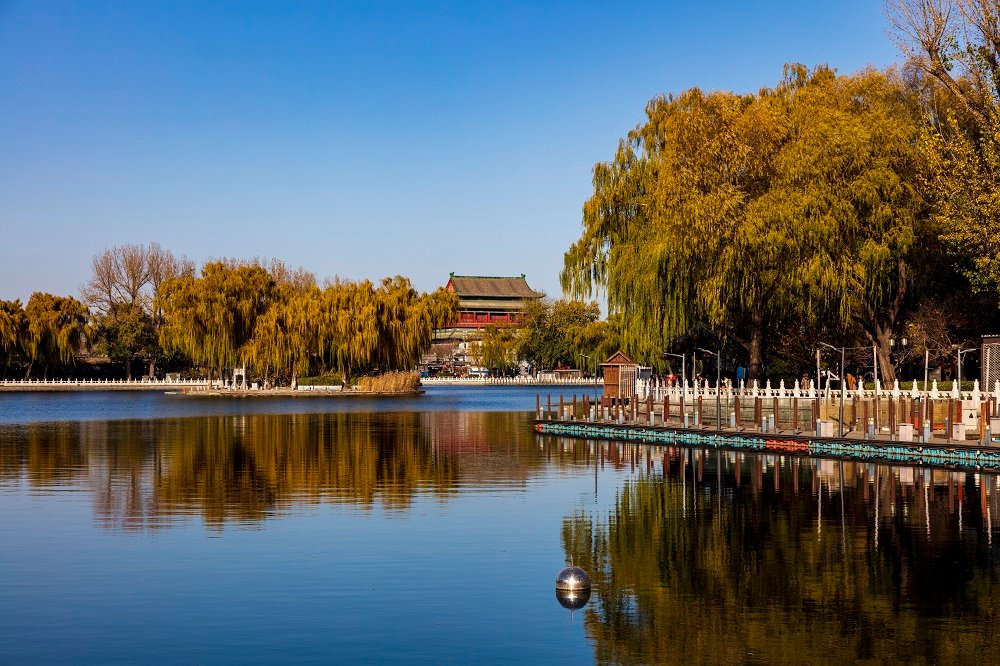
Shichahai, also known as “Ten Temples Lake,” derived its name from the ten temples that originally surrounded it. Shichahai was once the core of urban planning and water systems during the Yuan, Ming, and Qing dynasties. Since the Yuan Dynasty, it has been a bustling commercial area in Dadu City, and from the Qing Dynasty onwards, it became a place for summer recreation, adding to the scenic beauty of Yanjing (ancient name for Beijing).
Shichahai boasts extensive historical sites and cultural relics along its shores, preserving a wealth of old Beijing’s folk culture and traditional scenery. It is considered one of the most romantic and charming tourist destinations in Beijing, and also one of the best free things to do in beijing.
This area is a gem in Beijing, featuring expansive lakes, historical residences of famous figures, ancient palaces, and a wide array of local delicacies. The Houhai Bar Street is a well-known nightlife spot in the capital. Here, you can experience the harmonious coexistence of classical and modern, traditional and avant-garde, nature and culture.
Beihai Park/北海公园 (¥10)

Beihai Park, located in the heart of Beijing, is one of China’s oldest, most complete, and representative imperial gardens. It is also one of the world’s earliest royal palaces. Situated adjacent to the Forbidden City and Jingshan Park, Beihai Park, along with Zhonghai and Nanhai, forms the “Three Seas.” The park, centered around Beihai Lake, has a rich history dating back over a thousand years and embodies the pinnacle of Chinese imperial garden design.
Within Beihai Park, you will find a picturesque landscape filled with pavilions, terraces, halls, temples, artificial hills, caves, flowers, and lush lawns. It features numerous famous historic sites and scenic spots, each with its unique characteristics.
The park’s layout is inspired by the mythological concept of the “One Pool and Three Immortal Mountains” (Taiye Pool, Penglai, Fangzhang, and Yizhou), creating a dreamlike and imaginative atmosphere. Beihai Park seamlessly combines the grandeur of northern imperial gardens with the exquisite elegance of southern private gardens. It is a masterpiece of classical Chinese garden art and a beloved leisure destination for the residents of Beijing.
If you wish to experience the ancient charm of Beijing, appreciate the art of Chinese gardens, and immerse yourself in a tranquil oasis in the heart of the city, Beihai Park is a must-visit tourist attraction.
Yuyuantan Park/玉渊潭公园 (¥10)
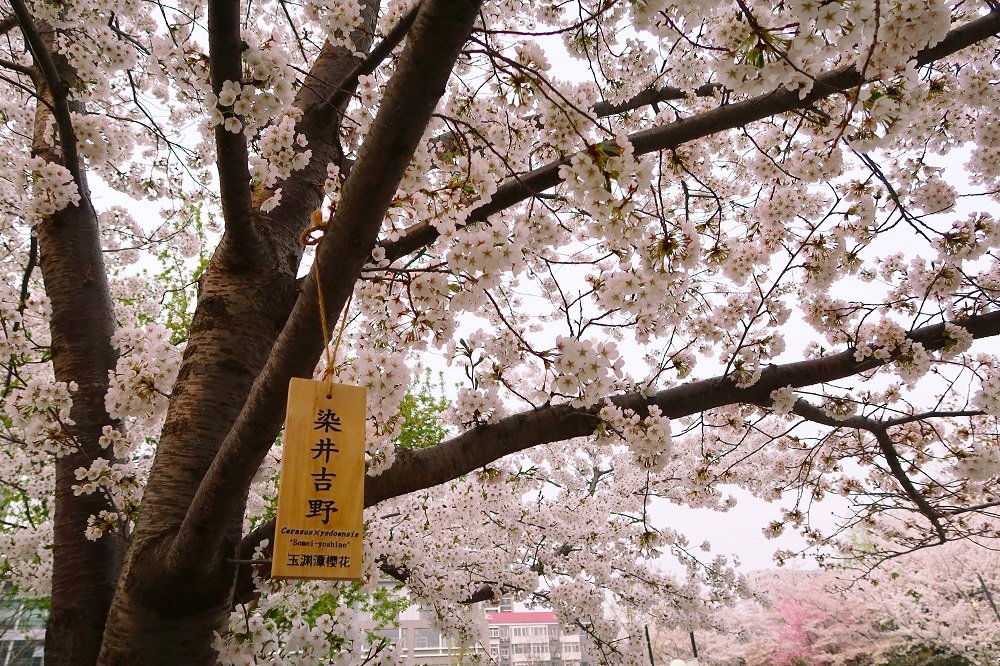
Yuyuantan Park is one of the larger parks in the urban area of Beijing and a great place for city residents to relax and take leisurely walks. It features two large lakes, East and West, surrounded by willow trees, offering beautiful scenery. The park is also home to the largest cherry blossom garden in Beijing, making Yuyuantan a popular destination for cherry blossom viewing in March and April each year.
Yuyuantan Park has entrances in several directions, including southeast, northwest, and others. With a total area of about 2 kilometers in length and nearly 1 kilometer in width, the park offers a wide space to explore. Inside the park, you can find various attractions, including the northern cherry blossom garden, the central East and West Lakes, and a southern recreational and scenic area.
Visitors typically spend half a day or so strolling through the park. Boating on the lakes is a popular activity, and there are also some children’s entertainment facilities. In winter, there’s even a snow amusement park, making it a great destination for families.
Jingshan Park/景山公园 (¥2)

Jingshan Park is located on the central axis of Beijing, and it’s a royal garden from both the Ming and Qing Dynasties. The central peak within the park, known as Wanchun Pavilion, is an essential places to visit for visitors. From this vantage point, you can enjoy panoramic views of the entire central area of Beijing, including the Forbidden City. It’s a fantastic place for capturing a full view of the Forbidden City in photographs.
For the best view of the Forbidden City from Jingshan Park, it’s recommended to visit in the morning before noon. During this time, the sun shines directly onto the Forbidden City, making its red walls and yellow tiles look particularly beautiful in the sunlight. After noon, the sun’s rays will shine directly onto Jingshan Park, and looking towards the Forbidden City may result in a hazy view. However, looking in the opposite direction towards the numerous pavilions and the sky will still offer a clear, scenic view. Therefore, it’s essential to plan your visit accordingly to make the most of your time at the park.
Xiangshan Park/香山公园 (¥15)
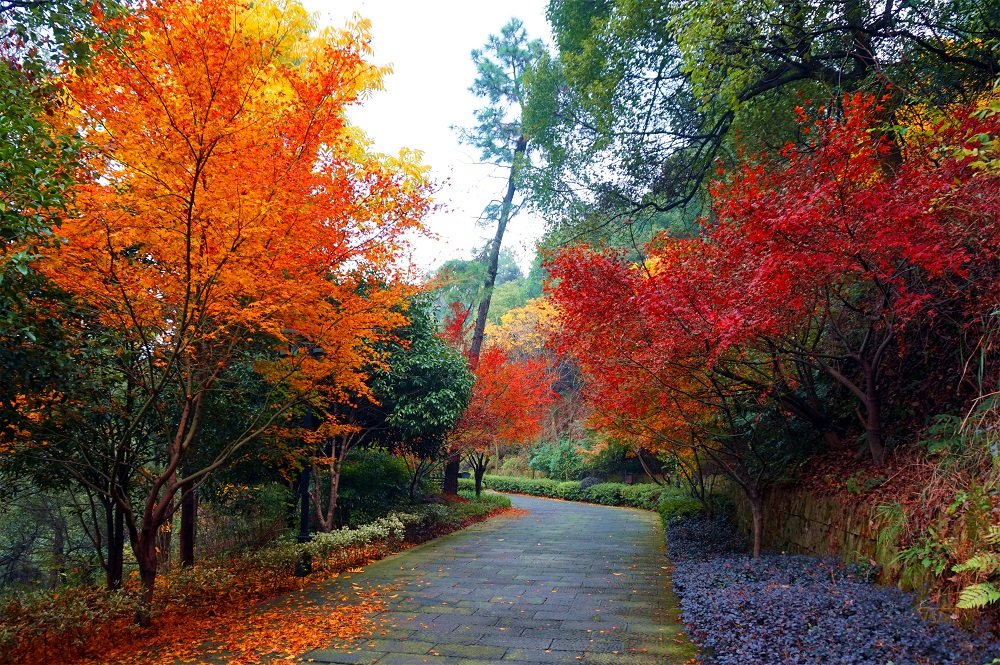
Xiangshan Park, located in the western suburbs of Beijing, is a royal garden known for its lush forests, historical relics, and stunning natural beauty. It’s often referred to as a “natural oxygen bar” due to its clean air and greenery. The park is famous for its vibrant autumn foliage, and the phrase “Red Leaves Cover the Fragrant Hills” is well-known throughout China.
The history of Xiangshan Park dates back nearly 900 years. During the Yuan, Ming, and Qing dynasties, emperors built retreats and hunting grounds here to escape the summer heat. The park is adorned with various historical and cultural treasures, including the Ming and Qing architectural styles of the “Biyun Temple,” a wooden “Five Hundred Arhats” with gilded statues (a rare sight in China), the “Zongjingdazhao Temple” that once hosted the Sixth Panchen Lama, and the elegant courtyard of “Jianxinzhai.” All of these attractions make it a must-visit destination for tourists and nature lovers alike.
Beijing Confucius Temple/孔庙 (¥30)
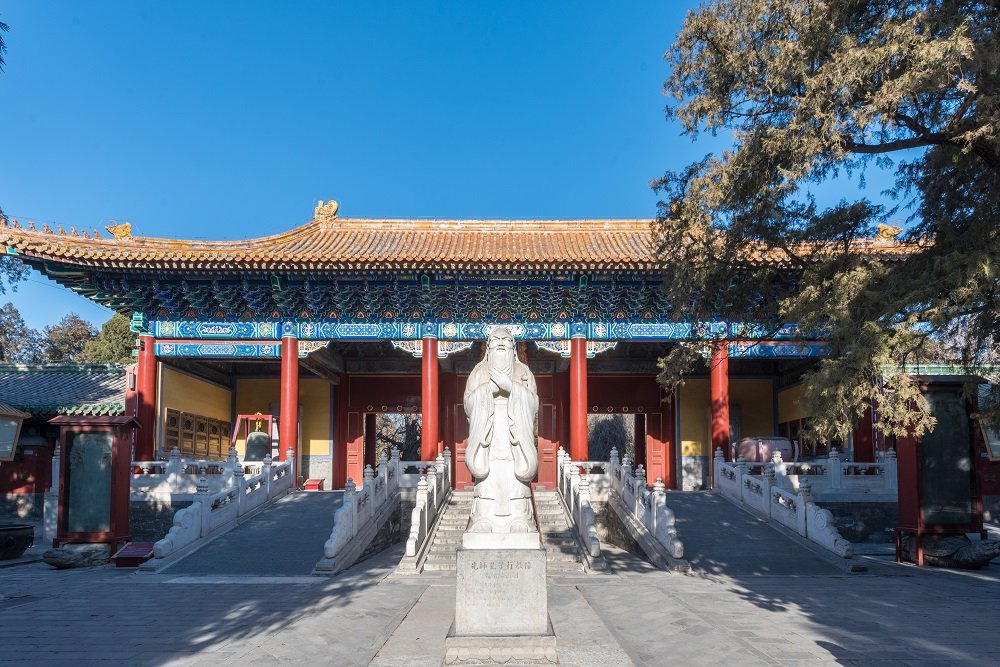
The Beijing Confucius Temple, also known as Kong Miao, is located on the famous Guozijian Street, adjacent to the Guozijian (Imperial Academy). It was originally built during the Yuan Dynasty and served as the place for worshiping Confucius during the Yuan, Ming, and Qing Dynasties. Confucius, revered as the “Great Sage and Teacher of Ancient Times,” was hence honored at this temple, earning it the name “Teacher’s Temple.”
Throughout its history, the Beijing Confucius Temple received the reverence of emperors from different dynasties, resulting in its elevated status. It has undergone several renovations and, in terms of scale and significance, ranks as the second-largest Confucius Temple in China, only after the one in Qufu.
The Beijing Confucius Temple boasts a history of more than 600 years and covers an area of over 20,000 square meters. Within its precincts, you can find 198 steles with the names of scholars who passed the imperial examinations during the Yuan, Ming, and Qing Dynasties. Additionally, there are 14 stele pavilions from the Ming and Qing Dynasties.
Besides these stone steles and pavilions, one of the well-known activities when visiting the Confucius Temple is witnessing traditional ritual music and dance performances. At the heart of the temple in the Chongsheng Shrine, there are several performances of the traditional ritual music and dance “Dachengliyue” daily, typically at 10:00 AM, 11:00 AM, 2:00 PM, 3:00 PM, and 4:00 PM (the number of performances may vary depending on the season and the number of visitors). Each performance lasts for about half an hour.
Bell and Drum Towers/钟楼鼓楼 (¥10/¥20)

The Bell and Drum Towers, located at the northern end of Beijing’s central north-south axis, are iconic architectural landmarks with a rich history in the ancient city of Beijing. They have served as the time-keeping center for the capital during the Yuan, Ming, and Qing dynasties. The Bell and Drum Towers consist of two separate buildings, the Bell Tower and the Drum Tower, situated in a north-south alignment, presenting a grand and imposing presence.
The large bell housed in the Bell Tower, cast during the Ming Dynasty in the Yongle era, weighs an impressive 63 tons. It holds the distinction of being the world’s oldest and heaviest functioning ancient bell, earning it the title of “King of Bells.”
The tradition of bell and drum towers dates back to the Han Dynasty in ancient China. Historical records indicate that even during the Han Dynasty, there was a system of morning drumbeats and evening bell tolls to signal the start and end of the day.
In Beijing, the Bell and Drum Towers played a central role as time-keeping centers during the Yuan, Ming, and Qing dynasties. The Drum Tower housed a large drum, while the Bell Tower housed a giant bell. Together, they maintained the rhythm of the city with morning drum strikes and evening bell chimes.
Even today, visitors can witness drum performances at the Drum Tower. These performances occur approximately once every hour in the morning and afternoon, creating a powerful and captivating auditory experience. In the evening, the Bell and Drum Towers are beautifully illuminated, showcasing their historical significance in a timeless and charming setting.
Sanlitun/三里屯 (Free)
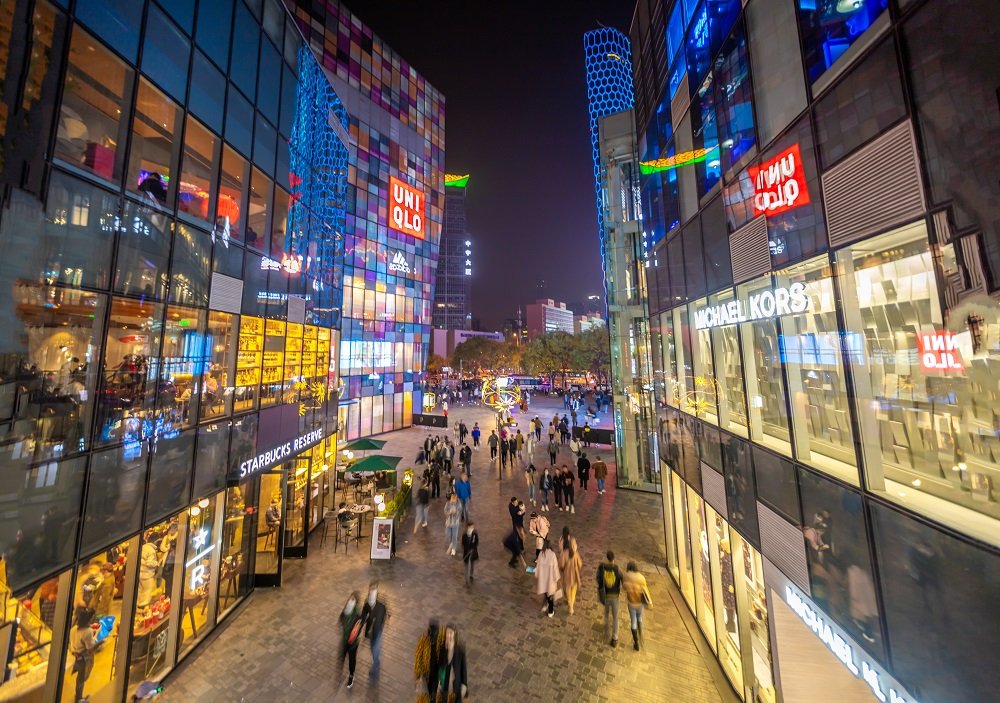
Sanlitun is located in the central-western part of Chaoyang District, Beijing, referring to its proximity to the inner city, approximately three “li” (a Chinese unit of measurement) away. This area encompasses Zuojiazhuang, Chaowai Avenue, Hujialou, and Maizidian.
After the founding of the People’s Republic of China, Sanlitun gradually developed into an embassy district, where foreign diplomats resided and conducted diplomatic activities. Today, it has become a vibrant hub for fashion, lifestyle, and entertainment in Beijing.
Sanlitun is renowned for its bar street and nightclubs, making it a popular tourist attraction for young people looking for nightlife entertainment. The area also boasts shopping centers and trendy boutiques, establishing itself as a pioneering fashion district in Beijing.
Wangfujing Shopping Street/王府井 (Free)
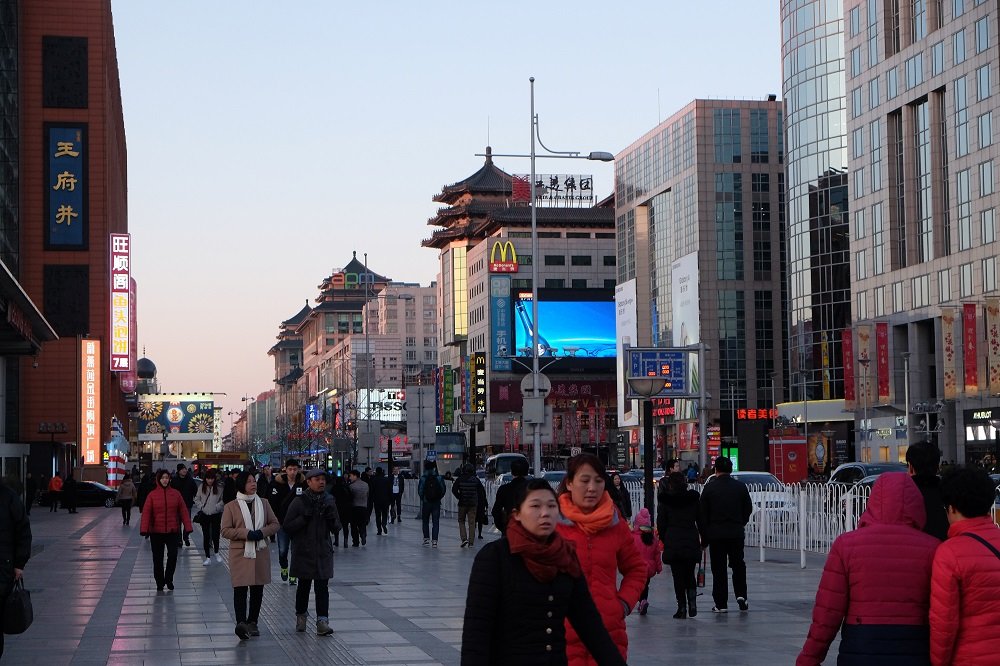
When talking about Wangfujing in Beijing, it typically refers to Wangfujing Pedestrian Street. Known as the “Golden Street,” it is hailed as “Beijing’s premier commercial street.” This area offers a variety of attractions, including Oriental Plaza, Old Beijing-style Street, Wangfujing Snack Street, the Roman Catholic Church of St. Joseph, and Wangfujing Department Store.
Oriental Plaza, one of Asia’s largest commercial complexes, is often referred to as a “city within a city.” It’s a comprehensive commercial center that combines shopping, dining, leisure, and entertainment.
Old Beijing-style Street is a commercial hub that showcases traditional Beijing folk culture. It features a variety of traditional Beijing foods, snacks, and handicrafts.
Wangfujing Snack Street, located to the east of the Old Beijing-style Street, is a culinary paradise where you can savor a wide range of regional delicacies from all over China without leaving the city.
The Roman Catholic Church of St. Joseph, also known as Wangfujing Catholic Church or Dongtang, is a key cultural heritage site in China and one of Beijing’s four major Catholic churches. The church’s architectural style combines Western classical design with traditional Chinese patterns.
Whether you’re a history enthusiast, a shopaholic, or a foodie, Wangfujing offers something for everyone to enjoy in Beijing.
Qianmen Street/前门大街 (Free)
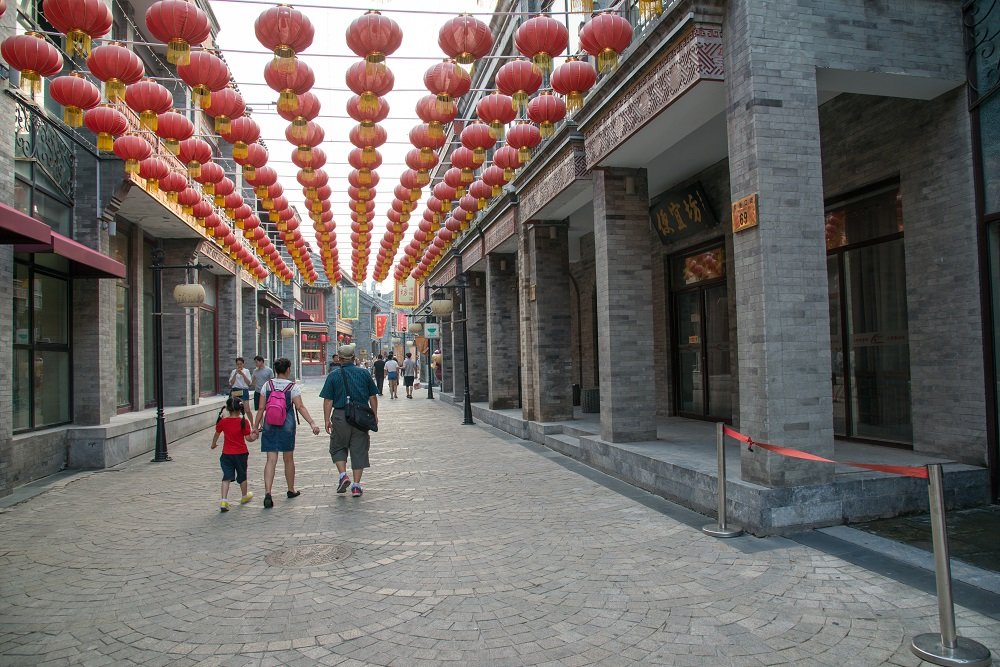
Qianmen Street, approximately 845 meters long, was known as Zhengyangmen Street during the Ming, Qing, and Republic of China periods. In 1965, it was officially named Qianmen Street.
Qianmen Street is one of China’s historic and cultural famous streets and one of the oldest surviving commercial streets in Beijing’s urban area. It boasts unique architectural styles and a rich cultural heritage, making it a must-visit attraction for tourists in Beijing.
Qianmen Street is home to numerous restaurants, shops, and a variety of street food stalls, making it a famous place for shopping and enjoying delicious cuisine. The street features ancient buildings, complemented by archways, old signage, and red lanterns. If you have a fondness for Chinese folk culture, Qianmen Street is a place you shouldn’t miss.
Nanluoguxiang/南锣鼓巷 (Free)
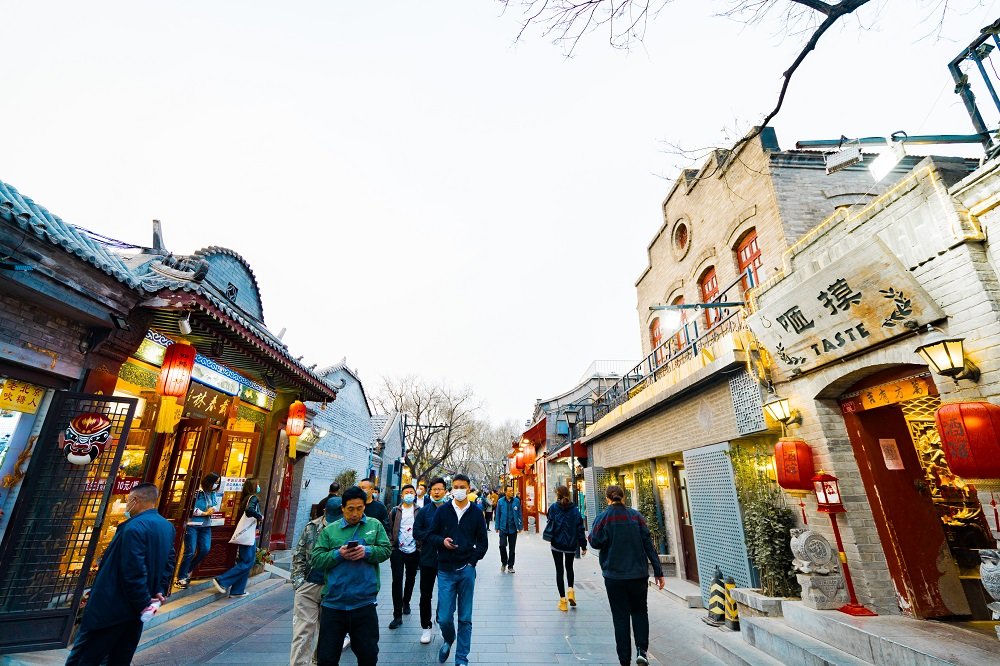
Nanluoguxiang is one of the oldest neighborhoods in Beijing and represents one of the best-preserved traditional Hutong areas in China. It is unique for its grid-like layout with eight east-west alleys on each side, forming a “fishbone” or “centipede” pattern.
Today, Nanluoguxiang has been primarily developed for tourism, creating a significant Beijing travel destination. It offers a variety of experiences, including shopping for traditional Beijing souvenirs, tasting local snacks, and exploring numerous restaurants and cafes. The Nanluoguxiang subway station, served by Line 8, is conveniently located at the eastern end of the alley, making it easily accessible for travelers.
798 Art District/798艺术区 (Free)
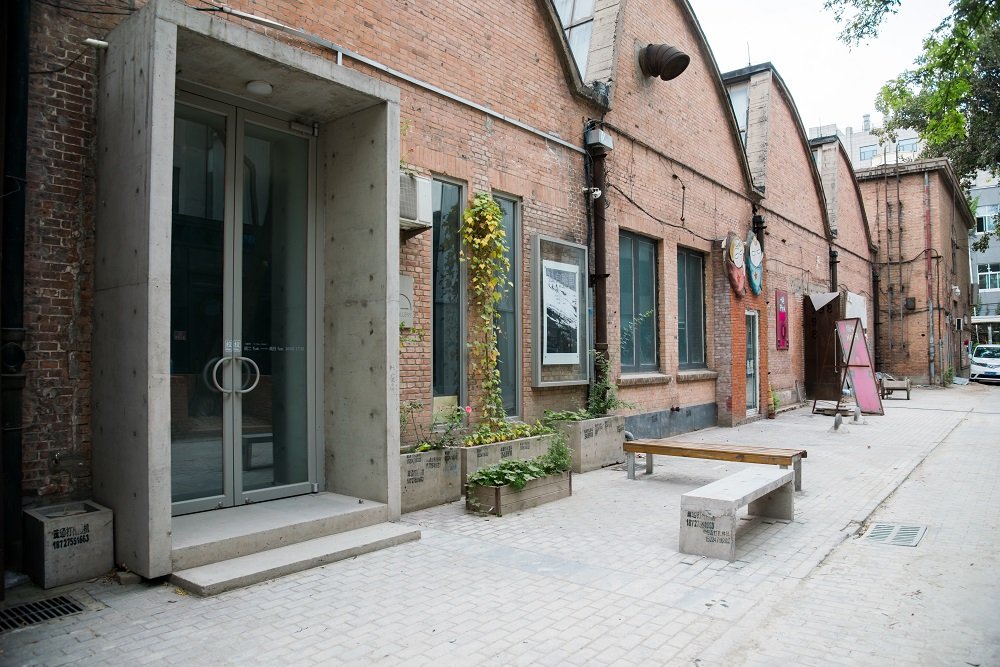
Beijing 798 Art District is one of China’s first art districts dedicated to contemporary art, often referred to as the “holy land” of the Chinese art scene. It has attracted numerous artists, designers, and cultural workers, making it a vibrant and creative hub.
The 798 Art District is transformed from former factory buildings, featuring various graffiti walls, artistic architecture, and many cozy cafes. Here, the space for imagination is infinitely expanded, and a sense of freedom fills the air.
This place is perfect for leisurely strolls and photography. Walking along streets brimming with artistic vibes, you might suddenly come across a surprisingly astonishing piece of architecture. Spending a day here allows you to leisurely explore, and you’ll discover that a relaxed lifestyle thrives in this artistic world. So, go ahead and immerse yourself in the world of art!
Yandai Diagonal Street/烟袋斜街 (Free)
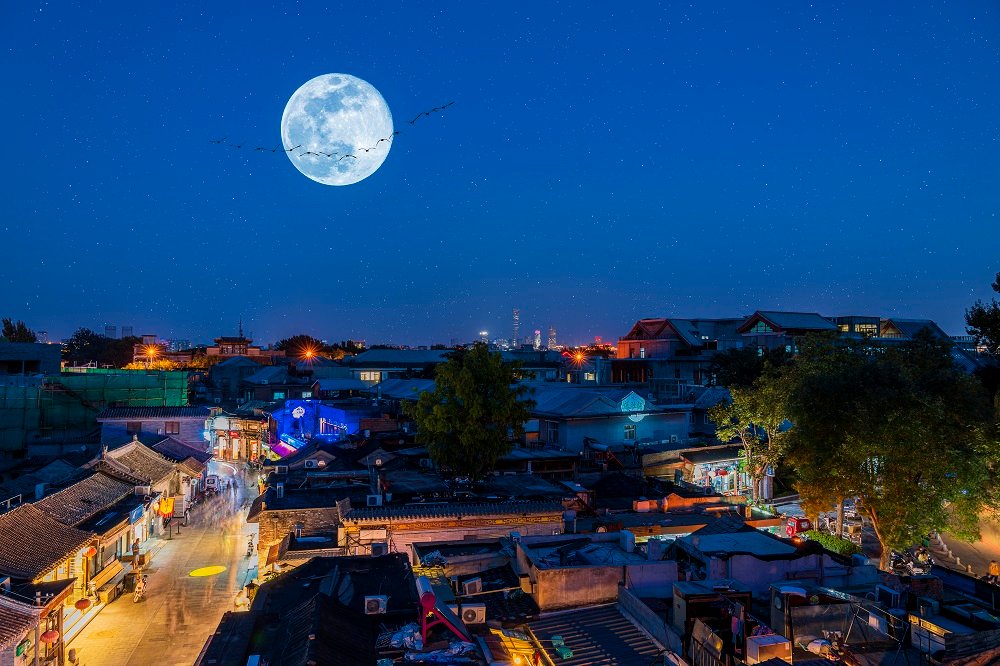
Yandai Diagonal Street, is a historic commercial street in Beijing, China. It is a little over 200 meters long and has a rich history dating back to the Qing Dynasty. During the Qing Dynasty, it was primarily known for selling tobacco products, framing calligraphy and paintings, and trading antique jade and other artifacts. It was a bustling commercial street during that time.
The street itself resembles a tobacco pouch, with its long, narrow shape representing the pouch and the eastern entrance resembling the mouth of a pouch. The western entrance bends towards the south, leading to Yinding Bridge. This unique layout is why the street was named “Yandai Diagonal Street” or “Tobacco Pouch Street,” and it certainly lives up to its name.
Beijing Universal Studios/环球影城 (From ¥419)

Beijing Universal Studios is China’s first world-class theme park located in Huairou District, Beijing. It is a comprehensive theme park that combines elements of film, entertainment, culture, and technology. The resort offers world-class entertainment facilities, spectacular performances, a wide variety of dining options, shopping, and exciting attractions, making it a fun thing to do in beijing.
Beijing Universal Studios incorporates Chinese cultural elements to create unique experiences. It features seven themed areas, 37 thrilling rides and attractions, 24 live shows, 80 dining establishments, and 30 retail stores. It provides a diverse range of entertainment options for visitors of all ages, making it a prominent destination for tourists and locals alike.
Conclusion
In this blog post, we’ve explored Beijing’s most iconic attractions, I think this should clear up your doubts about what to do in Beijing. From the historic Forbidden City and Summer Palace to modern wonders like the Bird’s Nest and Water Cube. We’ve also delved into the city’s rich cultural heritage with visits to temples like Yonghe Temple and the Confucius Temple, as well as its natural beauty in places like the Fragrant Hills Park and Yuyuantan Park.
We’ve touched on the vibrant street life of Wangfujing, the artistic scene at 798 Art District, and the contemporary vibe of Sanlitun. Beijing offers a unique blend of ancient traditions and modern innovations, making it a must-visit destination for travelers of all interests.



